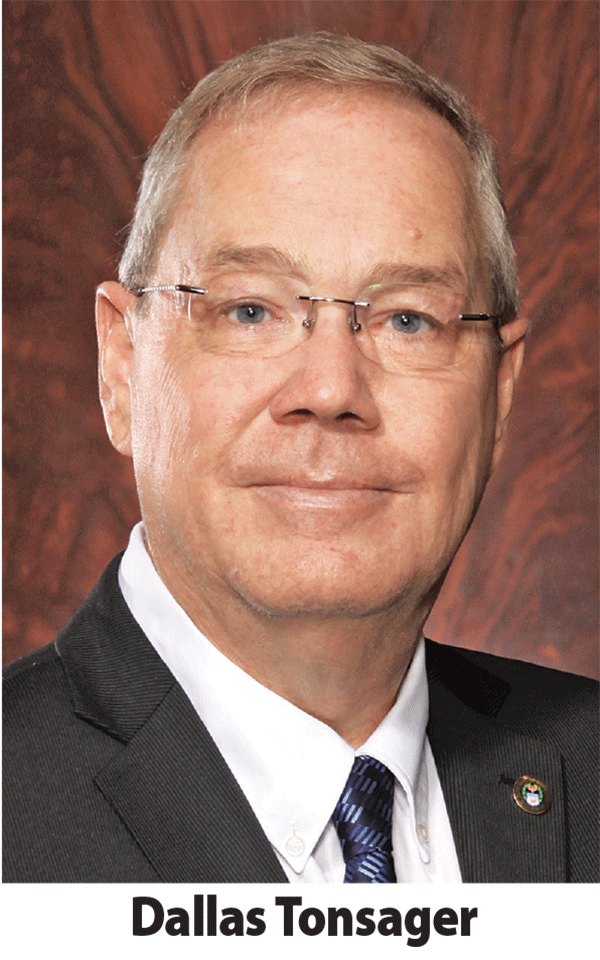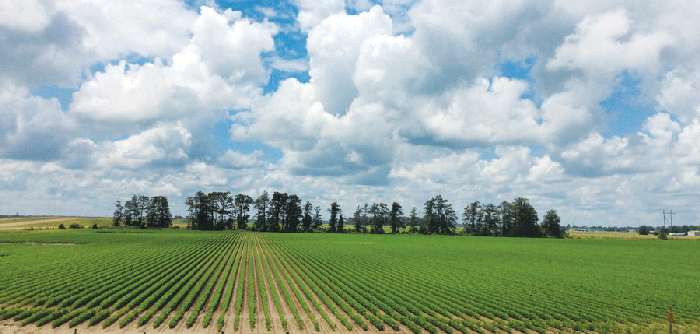
American agriculture “continues to advance through hard work and innovation” by the nation’s farmers, but innovation “often requires increased capital, and it is essential that credit availability keep pace with the demands of modern producers,” says Rep. Michael Conaway, R-Texas.
In remarks opening a hearing by the House Committee on Agriculture to review the Farm Credit System, Conaway, who chairs the committee, noted that “Congress has taken steps over the years to insure that the Farm Credit System is properly diversified and capitalized, and I believe it is fundamentally safe and sound,” and that “it will play a pivotal role in meeting the credit needs of rural America for years to come.”
Agriculture is “far more complex today” than it was when the FCS was founded more than 100 years ago, he says, “and our farmers compete in a volatile world market, have greater regulatory burdens, and increased input costs.
As farm incomes continue to decline, credit availability remains vital to producers,” Conaway says.
Ranking committee member Collin Peterson, D-Minn., said the hearing offered “a good opportunity for us to get a better understanding of the current credit situation, as we look to potential changes in the next farm bill — in both commodity and rural development titles.
“There’s no question that access to credit is necessary for farmers to stay in business, but access to capital is also necessary for ag businesses and rural communities.”
INFRASTRUCTURE NEEDS
He said the federal budget submitted by the Trump White House “seems to overlook the continuing infrastructure needs of rural America, from basic drinking water to state-of-the-art hospital facilities that rural areas deserve. I’ve been pleased to see commercial banks and Farm Credit System institutions team up to help insure that first rate health care is available closer to home.”
Dallas P. Tonsager, board chairman and chief executive officer of the Farm Credit Administration, the independent agency responsible for examining and regulating the banks, associations, and related entities of the Farm Credit System, including the Federal Agricultural Mortgage Corporation (Farmer Mac), said FCS today “is a dependable provider of credit to agriculture and rural America, as intended by Congress.”
FCS provides credit and other services to agricultural producers, aquatic producers or harvesters, and farmer-owned cooperatives, and makes loans for agricultural processing and marketing activities, rural housing, farm-related businesses, rural utilities, and foreign and domestic companies involved in international agricultural trade. It also provides funding and discounting services to certain “other financing institutions” and forms partnerships with commercial banks to provide credit to agriculture and rural America through participations and syndications.
After years of historic highs, Tonsager told the committee, “farm income reached a peak in 2013, and has been dropping every year since. The USDA expects this trend to continue this year, falling another 9 percent to $62.3 billion — which would be just half of the $123.7 billion in net farm income recorded for 2013.”
Crop and livestock sales and cash production expenses are expected to stay flat this year, he says, while government farm payments, which rose 20 percent in 2016, are expected to fall 4 percent.
DIFFICULTY COVERING COSTS
“As a result of the growing stress in the farm economy, many farmers and ranchers are now having difficulty covering their costs,” Tonsager says, “and this is beginning to reduce the quality of agricultural loans. While farm lenders, including the Farm Service Agency, continue to report that overall loan quality remains good, many loan performance indicators are now weaker.”
Federal Reserve Bank surveys of commercial bankers in the fourth quarter of 2016
“also suggest a worsening credit climate. According to the surveys, repayment rates on agricultural production loans have declined, and the number of renewals and extensions has increased.”
Although lenders expect an increase in loan delinquencies in 2017, Tonsager says,
“they don’t expect a large increase in problematic loans. With expectations for tight profit margins to continue through 2017, more farmers are likely to rebalance their farm balance sheets or change their operating structures to lower their production costs.”
The condition of the farm economy also depends in part on interest rate policy, he says. “Currently, interest rates on farm loans remain historically low, but an improving economy and labor market are prompting the Federal Reserve to make incremental interest rate increases. The average interest rate on all system loans held nearly steady, at about 4 percent, during 2016.”
Despite conditions in the farm economy, Tonsager says, the FCS “remains fundamentally safe and sound, and is well-positioned to manage” the current downturn. “The depth and duration of market weakness is unknown, but it will continue to present challenges for the System until markets rebound.”
YOUNG, BEGINNING FARMERS
The current credit stress level in the System’s loan portfolio is “well within its risk-bearing capacity,” he says, and asset quality is expected to decline only modestly in 2017 from relatively strong levels in 2016. Moderate loan growth, adequate capital, and reliable access to debt capital markets are supporting the overall condition of the FCS.”

The USDA expects the trend of falling farm income to continue this year, falling another 9 percent to $62.3 billion — which would be just half of the $123.7 billion in net farm income recorded for 2013.
Tonsager says the FCS “pays careful attention to the congressional mandate to serve the needs of young, beginning, and small farmers and ranchers. By offering competitive interest rates, flexible underwriting standards, and their expertise in the agricultural industry, System institutions make it possible for more people to enter farming and to stay in it. This is good for producers, as well as for the rural communities in which they live.”
As part of their mission to serve all eligible, creditworthy borrowers, System institutions are required to develop programs and make special efforts to serve young, beginning, and small (YBS) farmers and ranchers. In 2015, Tonsager says, “the pace of new lending to YBS farmers generally exceeded the pace of overall System lending to farmers. The number of loans made in 2015 to young, beginning, and small farmers increased by 5.1 percent, 7.5 percent, and 6.7 percent, respectively, from 2014.
“Since the total number of farm loans made by the System was up by only 3.7 percent, the share of total System farm loans made to all three YBS categories rose from that of 2014. These results are encouraging, given the high costs of starting a farm, the declining number of people entering agriculture, and the rising average age of farmers.”
To help YBS farmers qualify for credit in 2015, Tonsager says, “FCS associations offered differentiated loan underwriting standards for YBS borrowers or made exceptions to their regular standards. More than a third of associations provided concessionary loan fees, and more than half offered lower interest rate programs for YBS borrowers. Many associations partnered with state and federal programs to provide interest rate reductions, guarantees, or loan participations for YBS borrowers.”
COPING WITH RISK
Risk is “an inherent part of agriculture,” he told the committee, “and the causes are many: bad weather, changes in government programs, international trade issues, high interest rates, etc. These risks can sometimes make it difficult for borrowers to repay loans.
“To provide some protection from these risks, the Farm Credit Act gives System borrowers certain rights when they apply for loans and when they have trouble repaying loans.” Because of the additional stress in the farm economy,” he says, “this year we are emphasizing the need for System institutions to do everything they can, within the bounds of safety and soundness, to help borrowers in difficulty. We encourage them to seek the best possible outcome for every borrower.
�“System institutions can use their vast agricultural, financial, and business expertise to help borrowers develop strategies to weather the storm. We are encouraging System institutions to monitor their portfolios carefully for early signs of borrower stress. When they identify struggling borrowers, we urge the institutions to reach out to them before their situations become dire — while they still have options. In doing so, System institutions can successfully fulfill their congressional mission of meeting the credit needs of our farmers and ranchers, even in challenging times like these.”
Tonsager told the committee, “We remain vigilant in our efforts to insure that the Farm Credit System and Farmer Mac remain financially sound and focused on serving agriculture and rural America.”
About the Author(s)
You May Also Like




